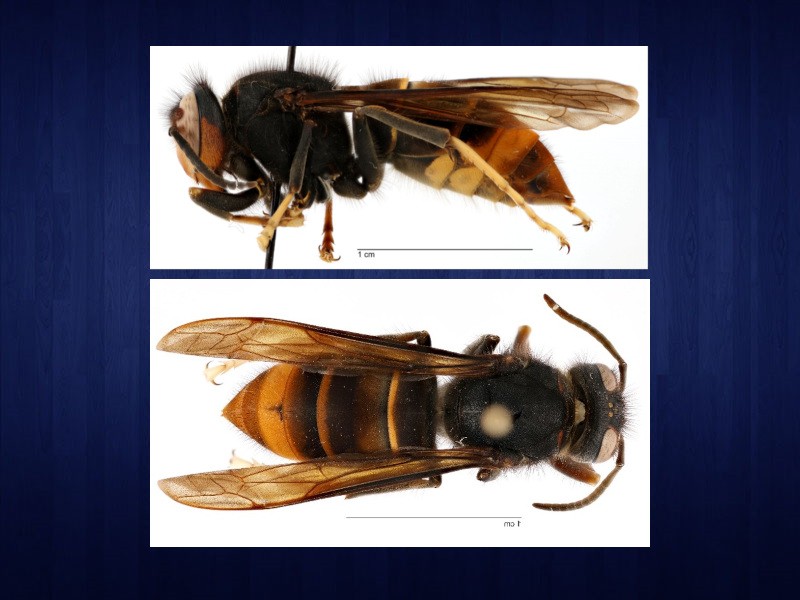An invasive hornet was recently discovered in the United States for the first time when it was spotted in Savannah, and state officials have asked Georgians to report sightings of the insect.
The Georgia Department of Agriculture said the yellow-legged hornet could potentially threaten honey production, native pollinators and the state's agriculture industry if it establishes itself in the state.
A beekeeper in Savannah found the hornet on his property earlier in August and reported it to the state agriculture department. The U.S. Department of Agriculture's Animal and Plant Health Inspection Service confirmed the University of Georgia's identification of the insect on Aug. 9 as a yellow-legged hornet (Vespa velutina).
"Georgians play an important role helping GDA identify unwanted, non-native pests, and I want to thank the beekeeper who reported his sighting to us, as well as our partners at the University of Georgia and USDA’s Animal & Plant Health Inspection Service for working swiftly to confirm its identity," said Agriculture Commissioner Tyler Harper. "Our experienced team of professionals will continue to assess the situation and are working directly with USDA APHIS and UGA to trap, track, and eradicate the yellow-legged Hornet in Georgia. "
The hornet is a social wasp series that constructs egg-shaped paper nests above ground, often in trees. These nests can become large, housing an average of 6,000 workers. The hornet is native to tropical and subtropical areas of Southeast Asia. It is also established in most of Europe, part of the Middle East, and parts of Asia where it isn't native.
"The GDA has a team of experienced scientists in their Pest Program, and we are actively collaborating with USDA and academic experts," a press release from the department said. "Together, we are developing an operational plan to trap, track, and eradicate the yellow-legged hornet in Georgia. The plan will begin with trapping, and APHIS and GDA will set out traps and survey for this pest to determine if additional yellow-legged hornets are in the area. If a colony is discovered through reporting, trapping, or tracking, the colony will be eradicated."
GDA's website has been updated with information regarding the hornet as well as a form to report a sighting. Georgians with additional questions or concerns should email [email protected].
Here is what to include with your report, if possible:
- Your name and contact information.
- The location of the sighting.
- Date of sighting.
- If you can, safely take photograph(s) of the hornet (we generally can only confirm a report with a photo or specimen).
- Location and approximate height of the nest if found (Is it in a tree? Approximately how high is the nest?).
- If you have no photo, please include a description of the size of the insect, the color of the head and body, and what it was doing.
- Description of the hive loss/damage (if no photo is available).
- The direction the hornet(s) flew when flying away.









